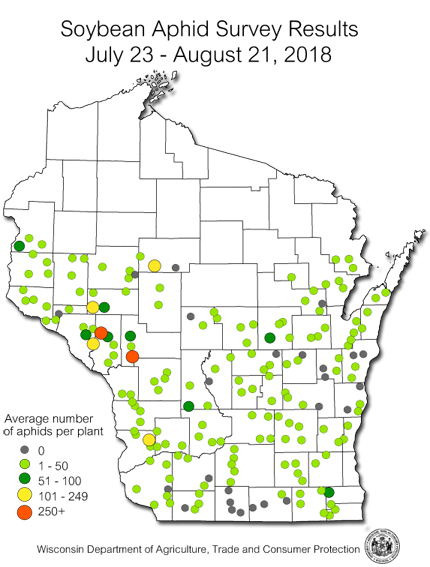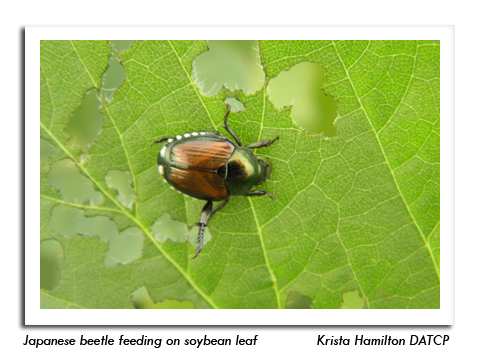
 |
|
|
Soybeans
Volume 63 Number 17 Date 08/30/2018 SOYBEAN APHID - The annual survey conducted from July 23-August 21 found a statewide average count of 14 aphids per plant. This average compares to six aphids per plant last year, eight aphids per plant in 2016, and indicates aphid pressure was slightly higher in sampled fields this season. One hundred and ninety soybean fields in the R2-R6 growth stages were surveyed, with aphids counted on 40 plants per field. Only two sites, one each in Jackson and Trempealeau counties, contained above-threshold populations of 260 and 290 aphids per plant. Densities were below 100 aphids per plant in 96% fields, and the majority of those sites (86%) had average counts of less than 25 per plant. Results of the survey suggest that while aphid populations did reach treatable levels in some fields, populations on a statewide scale were low or moderate this season. In addition, no cases of pyrethroid insecticide failure were reported or confirmed in the state in 2018. JAPANESE BEETLE - Beetles are still apparent in crops, orchards and residential areas, although numbers have decreased. Defoliation was observed in about 52% of the soybean fields examined during the aphid survey in August, signaling that this invasive pest continues to pose significant threat to the state's agronomic crops. Last season, 87% of surveyed fields had some degree of feeding. Although beetles may persist into September, much of their activity should decline within two weeks. -- Krista Hamilton, DATCP Entomologist 


|
|
|